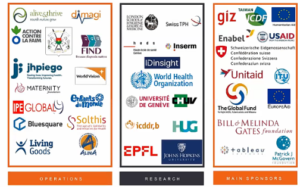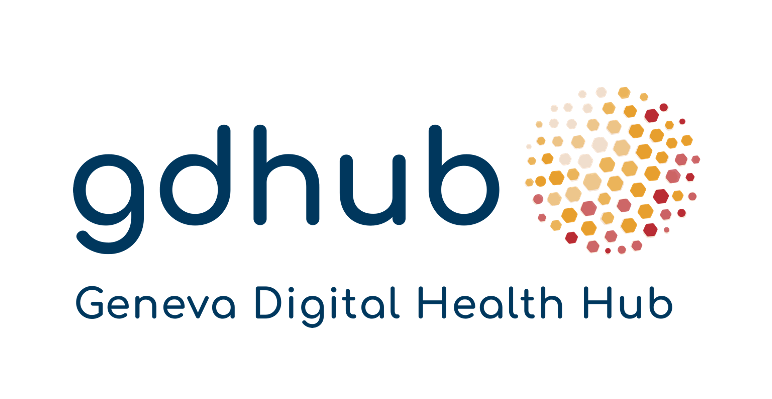The Community of Practice for Clinical Decision Support Systems (CDSS CoP) was launched early this year to promote collaboration and shared learning between different organisations in the CDSS space. Specifically, the CDSS CoP focuses on CDSS used in low- and middle-income countries (LMICs). It is co-founded by Swiss Institute for Tropical and Public Health (Swiss TPH), Médecins Sans Frontières / Doctors without Borders (MSF), Terre des Hommes (TDH) and the Geneva Digital Health hub (gdhub), the hosting organisation based at the University of Geneva. Attached are two recent publications by this group, one in French and the other one in English.

In this first year, the CDSS CoP has focused its activities on:
- Mapping of different projects involving digital tools for decision support, past or present, with a focus on CDSS used in LMICs. This mapping is currently open and aims to reduce duplication and improve understanding of the ecosystem and key stakeholders.
- Knowledge exchange: a series of 5 webinars in 2023 to share knowledge and experiences across organizations. Any member can propose a topic and organize a webinar.
- Community building: Implementome is the CDSS CoP community platform for registering new members and where members can explore the community members and projects (mappings, publications, discussions, and events), here is the link : https://gdhub.unige.ch/implementome/#/community/3708. Implementome is a free and open access digital health knowledge management platform developed by the gdhub.
In May 2023, the first webinar was organized by MSF with the participation of the World Health Organization (WHO), Terre des Hommes and Swiss TPH on the development of clinical algorithms for electronic decision support systems. MSF presented the MSFeCare project and shared the step-by-step content development document, TDH presented the IeDA project, Swiss TPH Almanach and WHO presented the SmartGuidelines. The slides with the key takeaways are available on the CDSS CoP page on the Implementome in files.
The second webinar, in June 2023, focused on adaptability to different contexts and scales. It was organized by Terre des Hommes with the participation of Dimagi and Swiss TPH. The first presentation was on the current spread of Integrated eDiagnostic Approach (IeDA) in African and Asian countries, in which Kallol Mukherji explained that IeDA is present in 5 countries with different levels of scale: Mali: 2 districts, 50 centres and 150 health workers, India (2 districts, 296 centres, 470 workers), Guinea (3 districts, 15 centres and 139 workers), Burkina Faso (60 districts, 1844 centres and 6500 workers) and Niger (2 districts, 2 centres and 5 workers).
In West Africa, IeDA IMCI aimed to support health system strengthening through the promotion of the Integrated Management of Childhood Illness (IMCI) protocol. It has become part of the national health policy for children under five at primary health care level in Burkina Faso and is being transferred to the Ministry of Health. Prospects include performance-based financing, additional immunization and HIV modules, and continuity of care between community and primary health care. In India, a major scale-up is planned, covering 24 districts and 2.9 million children by next year, with multiple applications: IMNCI counselling and nutritional status monitoring, routine immunization, tasking framework, supportive supervision, and quality improvement.
Kallol also mentioned the importance of the collaboration that Terre des hommes has put in place to build the momentum to move ahead with operational partnerships, research collaboration to gain insights, best practices and evaluation, and funders.

To conclude this first presentation, Kallol presented the factors that contribute to scaling, mentioning that all should be affected by the intervention in order to scale the project. At the health system level, the focus is on leadership commitment, and not only for reporting but by involving them in in daily operations and looking at the data; resource allocation (including human resources by involving focal points and decision makers, training centres for health workers);adaptive technology as it is always evolving, technology needs to be flexible; and improving clinical management for the government to invest in it The second level is the community level. Community involvement and acceptance is important, the community needs to be aware, understand the added value and the benefits in terms of access to quality care. The third level is the user level. It is important to design the CDSS so that it is a job aid, it simplifies reporting, and the interface is intuitive.
The second presenter Gillian Levine, from the Swiss TPH and WHO consultant to the Em Care project, then presented a case study to illustrate the adaptation of clinical content for sick young infants < 2 months, discussing the adaptation processes and key observations and lessons learned using the the Em Care, TIMCI and Dynamic projects.
Landscaping is an important stage in the adaptation process. It includes defining the goal of the CDSS (improve guideline adherence, quality, reduce antibiotic use, increase detection of severe disease, test new approaches), assessing the interest in using the CDSS as a catalyst to update or adapt current guidelines, defining the scope: IMCI only, other problems, identifying the available guidelines currently approved, implemented, trained, and the implementation setting: facility type, end-users, staff roles, structure/content of service. Then the involvement of key stakeholders for decision making with a small group for efficiency but with representation of different users (decision makers, end users). Many formats are possible depending on the resources available, but one quite useful is the face-to-face workshop to create a sense of engagement. Once the group and the format are set up, many decisions need to be made, including selecting the most recent guidelines, analyzing inconsistencies with country guidelines, turning L1 into L2 and here many decisions need to be made based on resources and national guidelines, deciding on new guidelines and adapting to local systems and processes, adapting to multiple guidelines and not just one. All this work has to be done country by country as context, resources and decisions will not be the same even if they use the same guidelines.
The last presenter was Sumathra Rao who presented the E-IMNCI application, a diagnostic support tool adapted to the IMNCI guidelines.
The next webinar is on 28 September, it is coordinated by the ICRC on “The pragmatic assessment of CDSS in low-resource, fragile settings: an example from Somalia”. The registration link is here: https://unige.zoom.us/meeting/register/u5Ikd–ppj4tE9Gt-jxO–0hZ1Q3IoHMfeDH#/registration
To learn more about the CoP work, you can visit the page of the Symposium on Clinical Decision Support Systems at Swiss TPH where the CoP was launched, https://www.swisstph.ch/en/about/events/cdss-symposium-2023. If you are interested in joining this community of practice, we would love to have you! You can register on the implementome!

Recent Comments